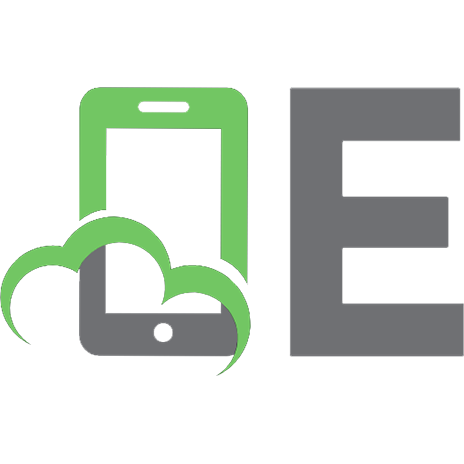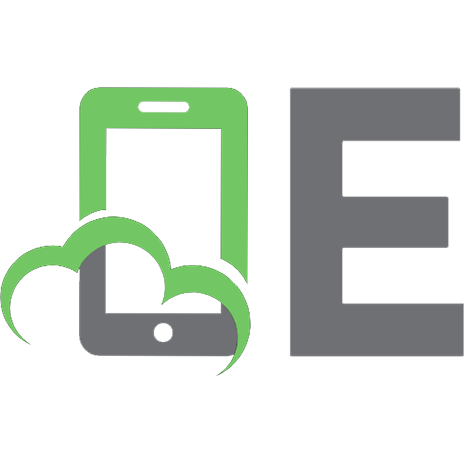Linux Essentials for Cybersecurity (for True EPUB) 9780134853024, 9780789759351, 0789759357, 2018941152
ALL YOU NEED TO KNOW TO SECURE LINUX SYSTEMS, NETWORKS, APPLICATIONS, AND DATA–IN ONE BOOK From the basics to advanced
427 125 52MB
English Pages 690 Year 2019
Table of contents :
Introduction
Part I: Introducing Linux
Chapter 1: Distributions and Key Components
Chapter 2: Working on the Command Line
Chapter 3: Getting Help
Chapter 4: Editing Files
Chapter 5: When Things Go Wrong
Part II: User and Group Accounts
Chapter 6: Managing Group Accounts
Chapter 7: Managing User Accounts
Chapter 8: Develop an Account Security Policy
Part III: File and Data Storage
Chapter 9: File Permissions
Chapter 10: Manage Local Storage: Essentials
Chapter 11: Manage Local Storage: Advanced Features
Chapter 12: Manage Network Storage
Chapter 13: Develop a Storage Security Policy
Part IV: Automation
Chapter 14: crontab and at
Chapter 15: Scripting
Chapter 16: Common Automation Tasks
Chapter 17: Develop an Automation Security Policy
Part V: Networking
Chapter 18: Networking Basics
Chapter 19: Network Configuration
Chapter 20: Network Service Configuration: Essential Services
Chapter 21: Network Service Configuration: Web Services
Chapter 22: Connecting to Remote Systems
Chapter 23: Develop a Network Security Policy
Part VI: Process and Log Administration
Chapter 24: Process Control
Chapter 25: System Logging
Part VII: Software Management
Chapter 26: Red Hat–Based Software Management
Chapter 27: Debian-Based Software Management
Chapter 28: System Booting
Chapter 29: Develop a Software Management Security Policy
Part VIII: Security Tasks
Chapter 30: Footprinting
Chapter 31: Firewalls
Chapter 32: Intrusion Detection
Chapter 33: Additional Security Tasks
Appendix A: Answers to Review Questions
Appendix B: Resource Guide
Glossary
Index
Introduction
Part I: Introducing Linux
Chapter 1: Distributions and Key Components
Chapter 2: Working on the Command Line
Chapter 3: Getting Help
Chapter 4: Editing Files
Chapter 5: When Things Go Wrong
Part II: User and Group Accounts
Chapter 6: Managing Group Accounts
Chapter 7: Managing User Accounts
Chapter 8: Develop an Account Security Policy
Part III: File and Data Storage
Chapter 9: File Permissions
Chapter 10: Manage Local Storage: Essentials
Chapter 11: Manage Local Storage: Advanced Features
Chapter 12: Manage Network Storage
Chapter 13: Develop a Storage Security Policy
Part IV: Automation
Chapter 14: crontab and at
Chapter 15: Scripting
Chapter 16: Common Automation Tasks
Chapter 17: Develop an Automation Security Policy
Part V: Networking
Chapter 18: Networking Basics
Chapter 19: Network Configuration
Chapter 20: Network Service Configuration: Essential Services
Chapter 21: Network Service Configuration: Web Services
Chapter 22: Connecting to Remote Systems
Chapter 23: Develop a Network Security Policy
Part VI: Process and Log Administration
Chapter 24: Process Control
Chapter 25: System Logging
Part VII: Software Management
Chapter 26: Red Hat–Based Software Management
Chapter 27: Debian-Based Software Management
Chapter 28: System Booting
Chapter 29: Develop a Software Management Security Policy
Part VIII: Security Tasks
Chapter 30: Footprinting
Chapter 31: Firewalls
Chapter 32: Intrusion Detection
Chapter 33: Additional Security Tasks
Appendix A: Answers to Review Questions
Appendix B: Resource Guide
Glossary
Index










![Soar with Haskell (for True Epub) [1 ed.]
9781805128458](https://ebin.pub/img/200x200/soar-with-haskell-for-true-epub-1nbsped-9781805128458.jpg)